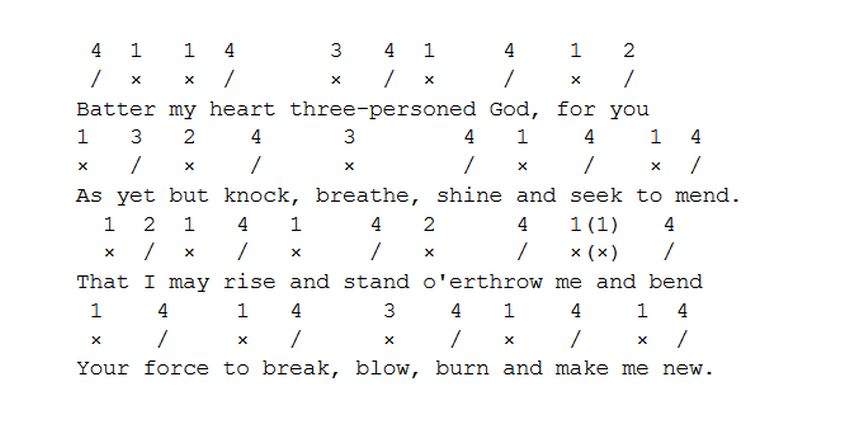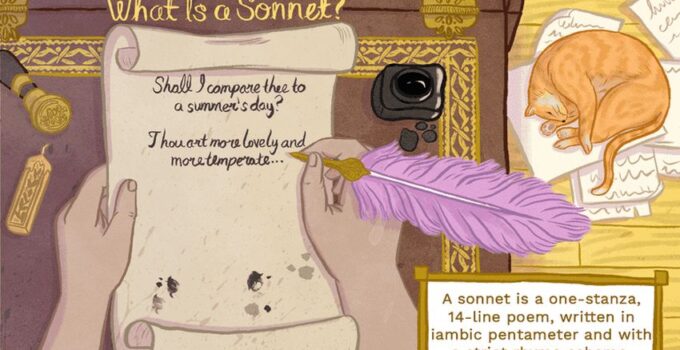Have you ever wanted to try your hand at writing a Shakespearean sonnet? Well, okay, then, why not? You should be able to write a sonnet quite easily if you enjoy writing verse. It is a fourteen line poem with a single idea, and if you follow the model of a Shakespearean sonnet you will end up with one. It will never rival those of Shakespeare himself, though, because you are not Shakespeare.

source:time.com
However you will be able to recreate the form and the rhyme scheme, and even the rhythm pattern of a Shakespearean sonnet, if you follow these ‘how to’ instructions. You will be able to do what every school student at some stage gets to have a go at – write fourteen lines of iambic pentameter. You will be able to write your own quatrains and couplets, and your final effort may turn out to be quite good, even though it will not have the indefinable Shakespeare magic that every single one of his sonnets has.
Shakespeare built on a strong sonnet tradition that came from Italy, and particularly from Petrarch, who was so influential that, like Shakespeare, he has the form he developed named after him – the Petrarchan sonnet. Shakespeare adapted it into a precise form that suited him, and stuck with it through his 154 sonnets: we call that the Shakespearean sonnet.

source:www.wikihow.com
Roll up your sleeves, then, and let’s get down to writing your Shakespearean sonnet. There are three crucial areas:
1. Find a great theme for your sonnet
Your sonnet has to be about something so you need an idea. It has to be a single idea, with no distractions. It could be a feeling, like falling in love or grieving the death of a loved one. It could be about an area that interests you, like music, a film, sport. It could be about meeting someone or an incident, or an observation about one of life’s many aspects, but you must not diverge from whatever it is you choose as your idea.
2. Make your sonnet rhyme
Your sonnet must rhyme. The sets of four lines is obligatory, known as quatrains. They must follow this rhyme scheme: abab, for example, breath, life, death, wife.
The second and third quatrains will be the same but with different rhyming words, of course. The second quatrain’s rhyme scheme will be cdcd and the third will be efef.
That adds up to twelve lines, arranged in three quatrains. You have two more lines to go so you will have to write a couplet, which is two rhyming lines, using words that you haven’t used as your rhymes in the quatrains. That will be gg, for example, Spain and rain. The Shakespearean sonnet concludes with a couplet.
So your rhyme pattern for the sonnet will be abab/cdcd/efef/gg
H3 3. The pattern of the word stresses should be in iambic pentameter
Your sonnet must have a metrical pattern. It has to be iambic pentameter. That means every line will have five iambuses. Pentameter means five and iambus means foot, so each line has five feet, each composed of an unstressed followed by a stressed syllable. For example, Shall/I com/pare thee/to a/summer’s/day? Try it. Speak it out loud.

source:www.justyouressay.com
Iambic pentametre is characteristic for Shakespeare’s works, not only sonnets, but other genres as well. Here is one example: ‘But screw your courage to the sticking post’ (Lady Macbeth) Read it like this: /but screw/ your cour/age to /the stick/ing post/ Count the feet – there are five. And they are all an unstressed followed by a stressed syllable. Shakespeare uses iambic pentameter because it closely resembles the rhythm of everyday speech and he wants to imitate everyday speech in his plays.
You can very easily talk in iambic pentameter yourself, and you often do without knowing it, as our everyday speech falls naturally into that rhythmic pattern. For example, “I love the way the sunlight falls on flowers,” or “If you won’t go then don’t ask me to go,” or “To bake this cake you need a charcoal stove.” Try it. It’s by using that basic scheme and playing around with it a bit for special effects that Shakespeare manages to make the characters in his plays speak in everyday language. And the sonnets unfold in everyday language too, except that, unlike the blank verse of the plays, the sonnets are strictly rhymed.
H2 Now put all 3 points together to create your sonnet!
All you have to do now is put the three things together – your idea, your rhyming words and your iambic pentameter.
Examine the following sonnet, number 73, a Shakespeare reflection on being old, and see how it fulfills all the requirements of a Shakespearean sonnet. Read it aloud, then read it again, emphasizing the stressed syllables. It now has a sing-song meter but when you read it a third time, taking into account the meanings of the words and the choice of open and short vowels, the pauses in the middle of lines, stressed and unstressed syllables and all the other little manipulations of the language, you get a very sad, slow, reflective poem.
And why three quatrains? Can you see what he’s doing? In a Shakespearean sonnet, the first quatrain states the idea, the second changes the perspective to develop the theme – in this case, it becomes more personal, and the third takes another dive to go even deeper and more personal. The couplet acts as a conclusion, with an opinion about the importance of making the most of one’s last days.
Here is the Sonnet 73:
That time of year thou mayst in me behold
When yellow leaves, or none, or few, do hang
Upon those boughs which shake against the cold,
Bare ruin’d choirs, where late the sweet birds sang.
In me thou seest the twilight of such day
As after sunset fadeth in the west,
Which by and by black night doth take away,
Death’s second self, that seals up all in rest.
In me thou see’st the glowing of such fire
That on the ashes of his youth doth lie,
As the death-bed whereon it must expire
Consumed with that which it was nourish’d by.
This thou perceivest, which makes thy love more strong,
To love that well which thou must leave ere long.
Now you know how to write the perfect Shakespearean sonnet!
Find out more about iambic pentameter at www.nosweatshakespeare.com.


